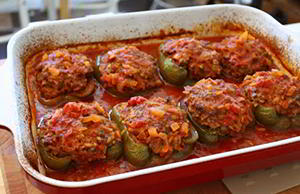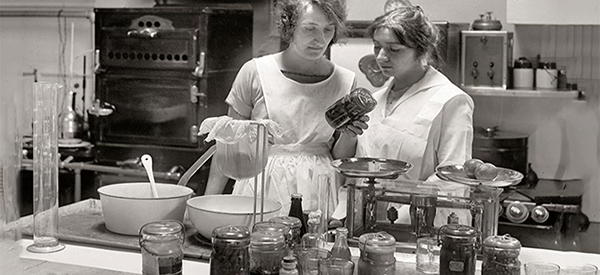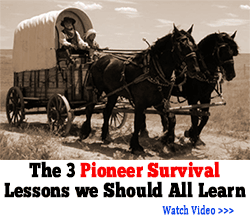A time wracked with suicide and fear the great depression was a holly terror on the nation.
Many people exclaim that the crash of 2008 cost them everything. The truth is that the “everything” of 2008 was very different than the everything of 1930. Mothers left alone by their husbands to feed children while living in doorways. Losing children to disease or hunger and not having a dime to help them, nor a way to procure one.
Related: Six Likely Events That Will Follow an Economic Crash
All that terror aside the emulsification of cultures and despair in America during the depression created everlasting practices in the management and creation of food. The type of meals that remind you of your grandmother and her dinner table. Many of these meals are still popular today. Many of the methods are used widely as well.
The depression was a time of horror but it gave way to some incredible innovation in food and food systems. In this article, we will learn about 10 of them.
STRETCH YOUR PROTEIN WITH FILLERS
 One of my favorite meals ever is my mother’s stuffed peppers. These peppers were hollowed out and sat upright like cups while bathing in sweet tomato sauce. The filling was always so delicious but I never understood why the ground beef was studded with white rice.
One of my favorite meals ever is my mother’s stuffed peppers. These peppers were hollowed out and sat upright like cups while bathing in sweet tomato sauce. The filling was always so delicious but I never understood why the ground beef was studded with white rice.
This was a recipe from a time when rice was used to stretch protein. Grains are often used as fillers for protein. Here is a list of other great options for stretching protein.
● Grain
● Corn
● Rice
● Lentils
Related: How to Keep Grains Edible and Fresh for Over 40 Years With Nitrogen
GROW FOOD
One of the most common sense methods to getting around starvation is to grow food anywhere you can. If people weren’t built into cities they used whatever dirt they could to grow food in. Starvation was one of the most alarming parts about the great depression. The growers and farmers’ prices dropped by 50% and the surplus of food could not be sold for profit.
This is a point that is often missed on our society. We have tons of people who hate the food system but very few who are making a strong effort to grow their own food.
RAISE ANIMALS
We fought hard for our ability to raise chickens in the Richmond city limits. It took about a year of badgering the city council but we pulled it off. Now we have access to fresh eggs every morning.
The rules were not as strict during the depression and things like ducks, chickens, and even rabbits were raised as food. This is a great lesson from the famine of the depression that people are just beginning to understand.
Related: Top 9 Animals to Raise in a Post Apocalypse World
PRESERVATION
Whether it was the use of salt, smoke or the removal of oxygen through canning preservation was an incredibly important factor in stretching food through the great depression. When you were lucky enough to have meat, it had to be eaten and stretched and preserved with excellence and little to no waste. For many there was no guarantee of a next time.
We must regard our meat with the same respect and appreciation. Drying food, curing it and smoking it not only work on shelf life but they also impart great flavor.
BUY LOCAL
An idea that has taken many people by storm, this push towards buying locally was truly the only option during the days of the depression. There were no other options. This relationship with local farmers and shopkeepers is so important. If we see another depression similar to that of the 30’s many will be dependent on places like Amazon and Walmart to feed and clothe them. These are retailers that produce absolutely nothing.
You must get to know producers.
USE CHEAPER CUTS OF MEAT
To truly appreciate an animal, you must understand how to prepare and use every piece of it. This was not the motivation behind those suffering during the great depression. Still, it was the only the undesirable cuts of meat that could be afforded by most people. So, it became a matter of life and death for them to learn how to make these cuts edible.
I would recommend exploring the following cuts of various animals as viable and delicious food options:
- Tongues
- Liver
- Shin
- Shank
- Brains
- Tails (pig and ox)
HUNT
Hunting was a serious endeavor in the age of the depression. For many it was hunting that put food on the table. This increase of demand on wild game affected the numbers in a big way. The hunting of these animals made them scarce for many years in some areas. The use of wildlife management has since brought many populations back.
With 300 million people in the nation hunting will only work early on. The game would all be taken very quickly. Still, it doesn’t take many animals to feed a family for a year so getting a deer or two early on would certainly be a worthwhile endeavor.
Related: Six Primitive Traps For Catching Game In The Woods
PINCH PENNIES FOR FOOD
The idea of reusing and preserving material items like clothes, shoes and items around the house is so foreign in this throwaway society. Of course, any money saved on material items could be put towards heating and feeding the family. These would have taken precedence over a new dress or new shoes.
It wasn’t uncommon for a young boy to have 1 pair of shoes and one pair of pants that were cut offs of an older dead man’s pants. It was sheer necessity and we could use the idea to reuse or repair to improve our own finances and lives.
HOW YOU COOK YOUR FOOD
Though it may seem simple, the challenges of keeping warm and keeping hot food on the table made fuel a definite concern for many who were struggling in the depression. These struggles were greater in the compacted cities across the nation. Coal was used as well but it all came at a cost.
We could learn the importance of a cord of wood from our great grandparents. You should invest in a diverse array of methods for heating your home and cooking. This could include wood stoves, pellet stoves and electric generators.
Related: How to Make Firebricks (fire logs) and Wood Stove Logs for Free!
TEACH THE NEXT GENERATION
Easily the most important lesson learned was the how to transfer knowledge. These lessons sometimes spanned several generations. The recipes, the traditions, the superstitions and the knowledge that kept them alive through such a terrible time still exists today. Though the marks are fading from our society you still get a whiff of them from time to time.
Just as they thought it their duty to transfer these lessons and this knowledge to the next generation so too will it be yours. You must be prepared to cut through the shroud of technology and capture the interest of the young and old who will carry this knowledge forward.
You may also like:
5 Commitments You Must Make Before the Next American Depression
How To Make Your House Invisible To Looters (Video)













In your list of other cuts of meat to be used, I noticed heart was absent. In season, my family has used the hearts of beef, venison, elk, rabbits, pigs, sheep, chickens & turkeys in a stirfry with asparagus, onion and seasonal mushrooms with ginger root, soy sauce & wild honey for excellent meals. Cut up into 1/4″ pieces and flash cooked, removed before the vegetables and re-added later is absolutely a fine way to create a meal. Gizzards are equally good in this basic recipe. We have even had finicky eating children of friends be served the heart asparagus and have them like it.
Many towns are beginning to allow chickens, however many more are not. Rabbits fly below the radar and are seldom noticed or complained about. They produce a lean meat, reproduce easily, and the fur can be also used. Their diets can be supplemented with vegetable peelings/trimmings and dry bread scraps. And the neighbors don’t complain about the rooster crowing at 5:30 🙂
Remember to use the bones, especially the long bones, for broth! A long slow simmer will resultin a very good broth, to use alone or as a base stock.
I received a response regarding use of the long bones for broth and I whole heartedly agree. At one of the place we lived, our neighbors were avid hunters possessing six tags which were usually completely filled each season. They never ate venison tongue, heart or liver. They did give the liver to their dogs but the hearts & tongue were discarded. As they always had difficulty disposing of the bones, they began to give them to my family in exchange for the tongue & hearts. By breaking longer bones small enough to insert into 21 qt pressure cooker, we could cook for about 30 minutes, pull the cooked meat from the bones and set aside for canning in 1/2 pint jars, return the bones to to the canner and cook at 15# for at least an hour. Most venison bones are soft enough to run through a standard garbage disposal that we exhaust ported into chopped mulch or sawdust with a sheet on top. this strained out the insoluble minerals to give us bonemeal for the garden and some liquids to apply to artichokes and compost pile. Broth from the second cooking was added to the meats of the 30 minute cooking so that meat could be canned as nearly dry meat to be added to spaghetti or any other sauce over carbohydrates. With mayo, onion, pickles etc, 1/2 pint with liquid drained, makes a good sandwich spread as well. Those 4-6 venison carcasses provided us with several quarts of soup stock through the winter.
WHEN IT GETS DOWN TO HEADING FOR THE NATIONAL FOREST, YOU MAY HAVE TO BE COVERT. THAT’S FEDERAL LAND EVERY WHERE . THEY CAN ARREST YOU, OR JUST SHOOT YOU WHEN THE SHTF. BUILD HOLE FIRES,BELOW GROUND USE A TUNNEL FROM THE TOP TO THE PIT FOR AIR. GET CAMFLOG AND HIDE. JUST MAKE SURE YOUR CLOSE TO A WATER SOURCE. GOOD LICK PEOPLE.
During the summer of 1937 my parents lived on cherry tomatoes, wild blackberries, eggs from our flock of hens and when a hen stopped laying, boiled hen. Folks forget that when Roosevelt promised a chicken in every pot he wasn’t talking about fried chicken, he was talking about boiled chicken. I don’t care how much the market crashed in 2008, nothing we have experienced in the last half of the 20th century or so far in the 21st compares to the depression of the 1930s.
You’re so right. It will be worse than we can imagine. People are so lazy and ignorant now. Most cannot begin to cook a single dish from scratch. Or mend a simple tear or sew on a button. They don’t own a needle, thread or sewing scissors.
There aren’t any wild blackberries left. They have been killed by herbicide spraying. All the patches we picked when I was a girl are gone.
Ma’am:
I don’t know where you reside, but here is teh Willamette Valley in Oregon, they haven’t sprayed them all out by a long shot. People with mannerly goats still manage to use wethers to forage on the blackberries as a means of cleaning them up for hire. Goat jerkey from one slaughtered in the fall is a fine source of meat if no other recipes are available. Even some of the big Timber companies have reduced or eliminated their herbicide applications as no longer being cost effective.
Softballumpire
I grew up in Creswell, just south of Eugene. I now live in TN. I’m in my 60s now but still remember the blackberries of my childhood in Oregon. When I tell the people here about the size of oregon blackberries, they don’t believe me.
Half the town back then was orchards and blackberry patches. Although I don’t miss the rain, I do miss the beauty of the Willamette Valley. As a kid I remember blackberry patches that seemed to go on forever. Thank you for bringing back fond memories of the past.
Yes there are, I have wild blackberries patches all over my farm, in SW MO.
Ive bought a few blackberry root stalks last year and have planted them in a couple lots that have been vacant for years. One set is even in a city park close to the house. I had a small harvest this year. Looking forward to next year.
I agree! My Grandparents had chickens in the back of their garage(usually between 50-100). They lived on Long Island and all around them were potato fields. They worked out a deal with the farmer to take their chickens out to the field to eat the potato bugs in return for picking cull potatos in the fall. Bartering worked all the way around!
I just reread this article and was thinking about different fuel sources, and ways to conserve fuel. Crockpots and pressure cookers are not only fuel conserving, they tenderize otherwise tough cuts of meat, and halve the time it takes to cook beans, too. Instead of cooking, say, a venison heart on the back burner of the stove for 2 hours, the same heart will cook at 15# pressure in 40 minutes — and be tenderer and tastier!
A lot of people say “Ewww!” if you mention heart or tongue. They don’t think about the fact that muscle meats are what are commonly eaten, and what muscle gets more exercise than the heart?! And one of the best sources for hyaluronic acid, which is superb for arthritic joints, is from the gelatinous chicken/turkey/etc. feet and the combs and wattles of chickens. Some cultures (like Chinese and Middle Eastern) use those for a succulent soup stock.
My daughter made a solar cooker that works well, albeit slowly, when the sun is hot and bright — and you don’t have to heat up the kitchen!
I did not find info about pasta sauce. Help!
Unless you pressure can, ph is marginally high for longterm storage of tomato based sauces. Add 1 tablespoon lemon juice or balsamic vinegar per pint to each jar before adding sauce. This lowers ph to safe level.
nothing about pasta u agree misleading
. I somehow sent the wrong link. Please find the right article here: http://www.askaprepper.com/canning-pasta-sauce-long-term-preservation/
Thank you so much for bringing this to my attention
Claude
This entire issue of pasta sauce seems enigmatic as I was married to a Certified master food preserver and tend to view this sort of canning project as second nature.
We used to put up several pasta tomato sauces each year because we had a Kitchen aide mixer with a juicer strainer attachment which removed all the seeds from tomatoes and left us with the juice & pulp. The seeds extruded from the strainer were fed to the chickens. We used the 23 Qt pressure canner to cook down the juice on very low heat so as not to burn the reducing sauce. Spices were added periodically to our tastes. As we were filling jars, we would throw in a coffee measure or two of browned meat compressed into the measuring cup removed but meat broth from our canned bone soup added. A 2oz. stainless steel coffee measuring cup worked best. Ground meat was well compressed then the meat broth was added to the ground meat until the air spaces were filled. Two coffee measures were about right for beef, wild game depended on how long you allowed it to hang before grinding. We have used beef, bear, chicken, elk, goose, and venison in our canned sauces. Because tomato is acidic, we canned @ 10#-15# for at least 30 minutes, longer with quarts. We have even used Italian sausage from the store.
I would caution not to do this with the 4.5 Qt Kitchen aide. That model uses a nylon conical shaped gear, which won’t hold up to the rigorous uses. I went to the 6 Qt professional model.
One thing people do not think of is foraging like one can cook pine needles and such and there are other leaves from trees one can eat. Then wild garlic , onion , dandelion and so on . So if one knows where to look and what is safe to eat one can still have food.